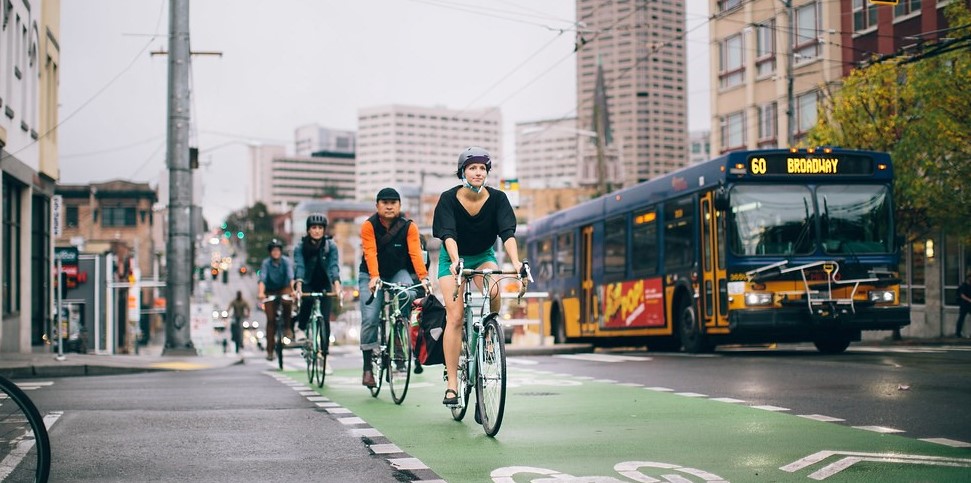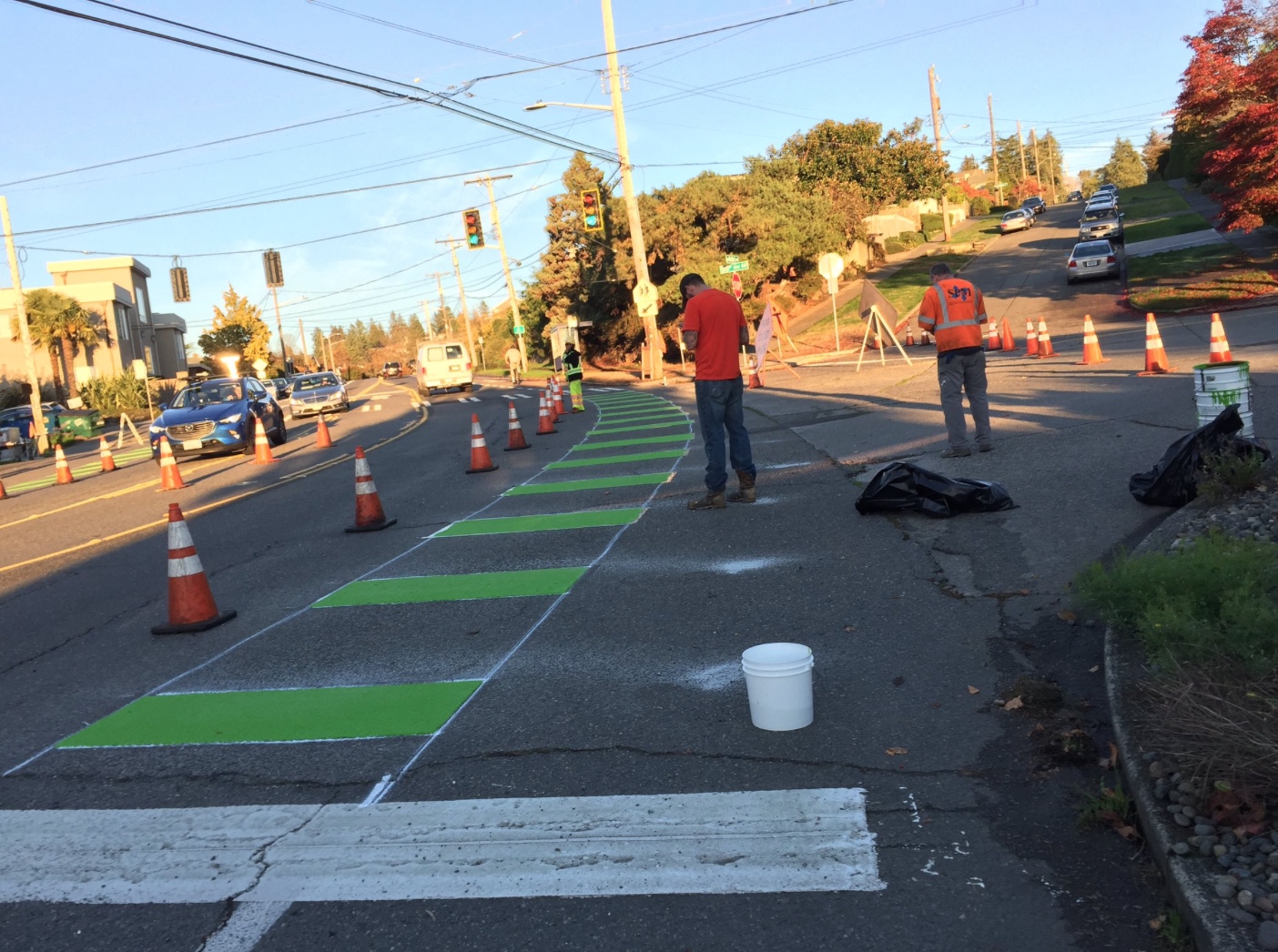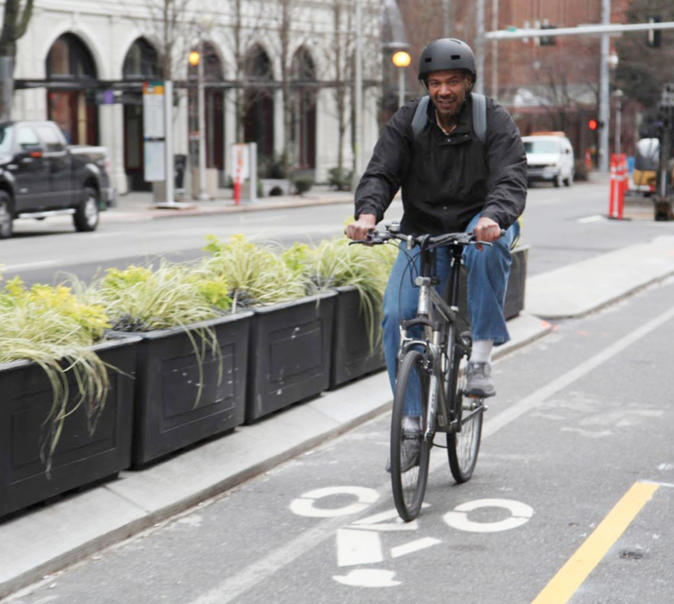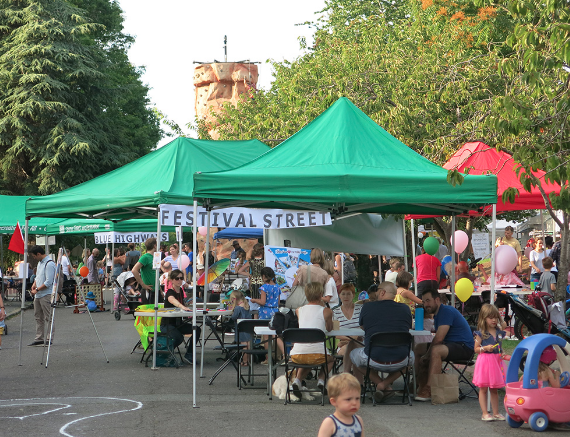2019 Year in Review
- Dec. 24, 2019
2019 Year in Review
Just incredible. 2019 was truly the biggest year yet for Seattle Neighborhood Greenways. Thanks to everyone who made it possible, and here's to even more progress in 2020! Jump to what interests you most:- Big Picture Overview—from director Gordon Padelford
- Citywide Wins
- Reports from the Neighborhoods - South
- Reports from the Neighborhoods - Central
- Reports from the Neighborhoods - North
- Broadview Home Zone
- Access to Future Light Rail Stations
- Record Broken for Fremont Bridge Bike Route
- A Neighborhood Greenway for 6th Ave NW
- Safe Routes to Whitman Middle School
Please don't forget to donate to keep us going!
Big Picture Overview—from director Gordon Padelford
Thank you for being a part of Seattle Neighborhood Greenways’ people-powered movement. What an extraordinary year it’s been!
Despite some early setbacks, we’ve won some hard-fought victories this year. I think we--advocates, allies, volunteers, and supporters alike--can rightly give ourselves a collective pat on the back.
Step by step, we’re getting closer to that shared vision where Seattle's streets unite neighborhoods and connect people to where they need to go. Where walking and biking are convenient, safe, comfortable, and even joyful. Where children are able to walk and bike to school and parks. Seniors are able to stay active and connected. Where our streets and transportation systems are truly accessible and welcoming, and reflect the needs of people of every age, language, ethnicity, gender, race, ability, and level of wealth.

At SNG, we know that achieving this vision will give us choices for how to get around, keep us safer, save us money, reduce climate pollution, and so much more!
We’re making progress towards this vision thanks to our focus on collaborations and big structural changes. We have an amazing grassroots network of local groups all across the city and partnerships with a wide range of other organizations. Take our work with the Move All Seattle Sustainably (MASS) Coalition. Together, we won big structural changes in 2019, including:
* Funding for the first-ever Seattle School District position dedicated to helping kids walk and bike to school.
* One of the best complete-streets policies in the country, making it harder for the city to cancel or delay planned bike projects when doing major roadwork.
* Safer speed limits for busy streets citywide.
We also know that for structural change to be successful we need to make our streets reflect the needs of all people. In 2019, we took another step along this journey, internally, by adopting a Racial Equity Action Plan and conducting trainings for staff and volunteers. Externally, we forged new relationships with partners like the Duwamish Tribe, to fight for a crosswalk to their longhouse and cultural center, and contracted with youth in South Park for door-to-door outreach to ensure the Georgetown-South Park Trail reflects the needs of Seattle’s largest Latinx community.
And the good news is that we’re seeing some encouraging trends, like the 900% growth in the number of people biking on 2nd Ave since the bike lanes have been protected and extended to more neighborhoods. More importantly, we know we’re making a positive difference in people's lives, which is what keeps me coming back to work everyday. For instance, we recently heard from a dad in North Seattle who told us that more kids are walking and biking to school year-round than ever. Perhaps you're seeing some of these changes as well---please let us know if you are!
Thank you for being a part of this people-powered movement. Your time, energy, and financial support has made a huge difference in 2019, and I can’t wait to see what we accomplish together next year!
Gordon Padelford
Executive Director
Seattle Neighborhood Greenways
Jump back to the top
Citywide Wins

Big Steps Towards Vision Zero
After the worst year in a decade for deaths and serious injuries on our city streets, the Mayor announced a major effort towards Vision Zero, including lowered speed limits on all arterials, cracking down on enforcement of drivers that run red lights, and creating a Vision Zero Task Force to address the issue like the public health crisis that it is. These are huge steps forward, and we will continue to advocate to redesign our most dangerous streets, and to lower speed limits on state routes like Aurora Ave N and Lake City Way.
Safe Places for People to Walk and Roll
It’s unacceptable that one quarter of all streets in Seattle lack sidewalks. We advocated for and won an additional $11 million in funding for new sidewalks and accessibility improvements for arterials. Additionally, we advanced two Home Zone pilots--a holistic, community-focused, solution making it safer to walk on non-arterial streets without sidewalks for a fraction of the cost. We also won funding to continue this cost effective program in 2020.
Safe Routes to School: New Staff for Public Schools
We also have good news to report about keeping kids happy and healthy walking and biking to school. We took the time this year to build relationships at ten schools across Seattle to learn more about each school community’s needs and work to mobilize caring parents, teachers, and neighbors. We’re already seeing results: five new school zone speeding cameras will be installed in 2020, and for the first time, there will now be a Seattle School District employee dedicated to organizing crossing guards, walking school buses, bike trains, and safety projects.Additional Systemic Changes
We’ve worked hard to combat the status quo through big systemic changes to our transportation system. By working with allied organizations such as MASS Coalition, we were able to pass a majority of the MASS Transportation Package, including new policies for construction and maintenance of our streets and intersections, and the structure of the Seattle Department of Transportation:-
Complete Streets
Inspired by a Cambridge, Massachusetts ordinance, City Council passed an ordinance requiring that planned bike lanes are included in large repaving projects except in rare circumstances. This will save money and time for the City, and also make it significantly harder for political winds to delay or cancel planned bike routes.
-
Sidewalks Maintenance
This year, City Council required SDOT to develop a plan for addressing maintenance of our city’s sidewalks, including both removal of snow, ice, and vegetation and also a systemic, sustainable solution for fixing the 150,000 documented hazards on our sidewalks. These range from small cracks that people could trip on to places where the sidewalk is completely impassable, especially for people using wheelchairs and other mobility devices. In collaboration with disability rights advocates at Rooted in Rights, we recommended that the City assess models like those used in Denver, with a built-in equity filter and progressive subsidy system so that the financial burden of improving mobility for all doesn’t fall on low-income property owners.
-
Bike Path Maintenance
Similarly, Seattle City Council also required SDOT to present a plan for the maintenance of existing bicycle infrastructure. Currently, maintenance is reactive and complaint-based, resulting in bike routes that are hard to use, unwelcoming, and sometimes erased by the passage of time. We’re also concerned that a complaint-based system leads to routes in wealthier or whiter neighborhoods being maintained more often than those in other parts of the city. We are pushing for a plan that standardizes maintenance so that the program relies less on complaints and all communities across the city can have safe and well-cared for bike infrastructure.
-
Traffic Signal Policy
We’re also advocating for a better traffic signals policy, so people don’t have to wait so long to cross the street, don’t have to push “beg buttons,” and other tweaks that will make it safer and more convenient for people to cross the street. This year, SDOT began implementing “head starts” for people walking at every intersection, which give pedestrians the green light a few seconds before vehicles. In 2020, SDOT will present the rest of their policy to prioritize people walking.
-
Funding for SDOT's Transportation Equity Program
As a part of Seattle’s Race and Social Justice Initiative, SDOT created a Transportation Equity Program, and this year, assembled a workgroup to identify and address systemic and structural equity issues. Given that race and racism still play a huge role in determining a person’s ability to get where they need to go in Seattle, we successfully advocated for the funding needed to continue this program and ensure that the workgroup has staff and resources needed to continue this important work and implement solutions department-wide. Jump back to the top
Reports from the Neighborhoods - South
-
SE Seattle Bike Connections
-
A Safe Crossing to the Duwamish Longhouse
-
A Community Effort for the Georgetown to South Park Trail
-
Pedestrian Safety for Rainier
-
Safe Routes to Transit
-
South Park Home Zone
-
Three Huge Connections for the Basic Bike Network
-
Connecting to the Seattle Center on Thomas St
-
A Community Comes Together at Bailey-Gatzert Elementary
-
Queen Anne Greenways' Annual Play Streets
-
Sidewalk Cafes for Seattle
-
Broadview Home Zone
-
Access to Future Light Rail Stations
-
Record Broken for Fremont Bridge Bike Route
-
A Neighborhood Greenway for 6th Ave NW
-
Safe Routes to Whitman Middle School






Reports from the Neighborhoods - Central





Reports from the Neighborhoods - North




